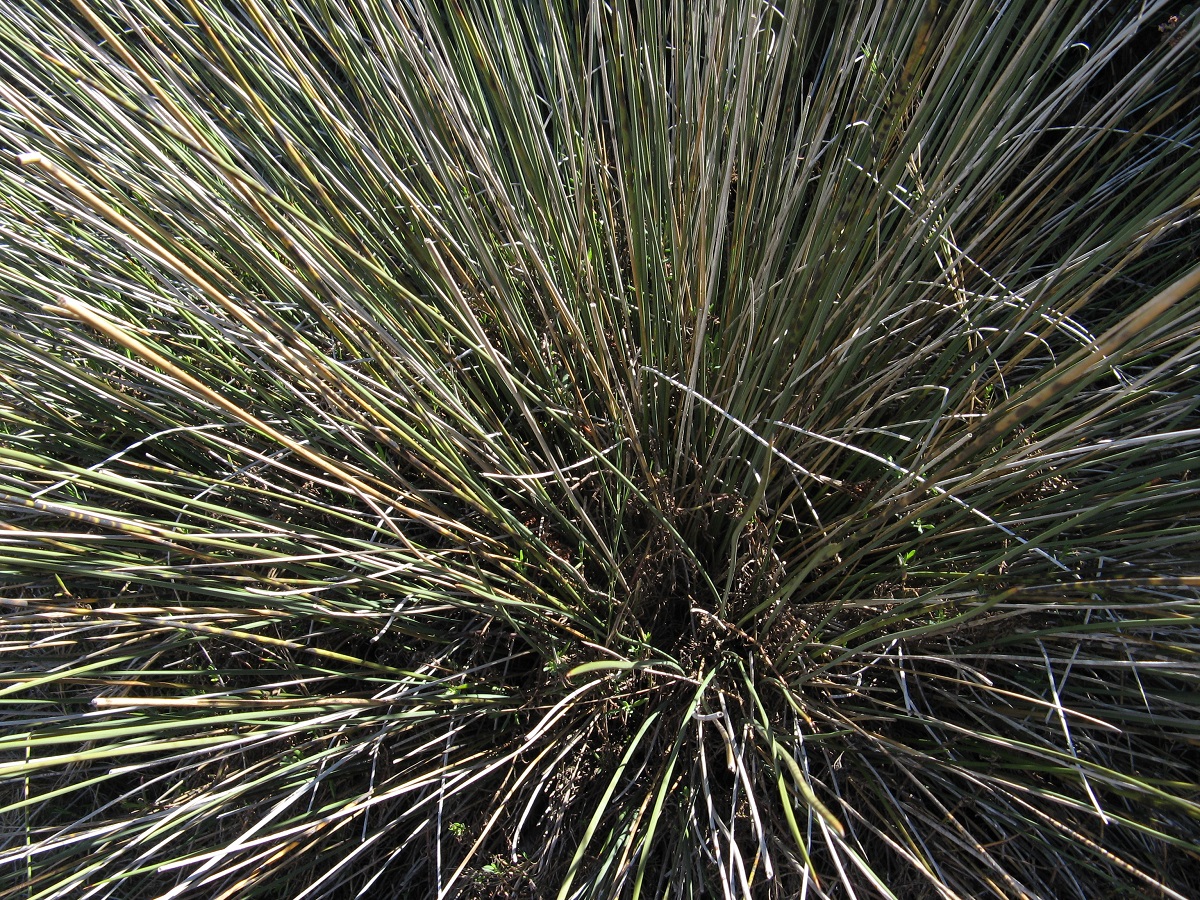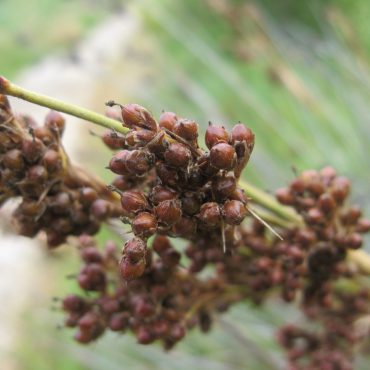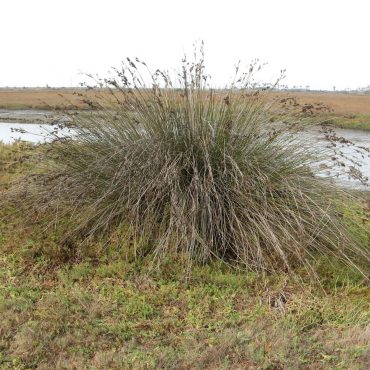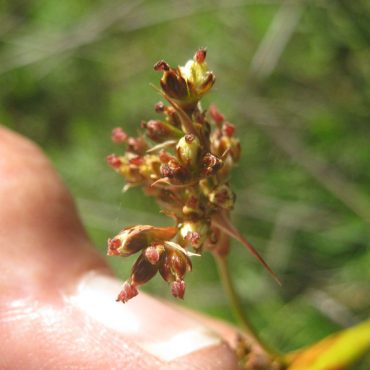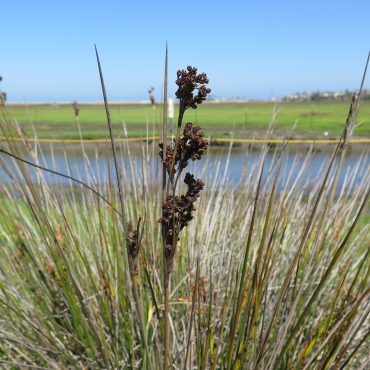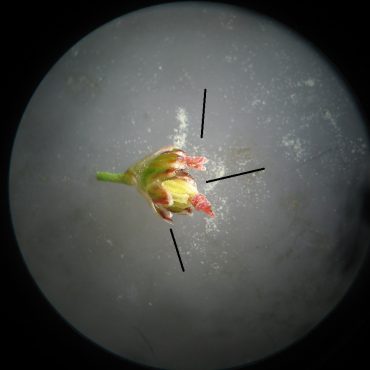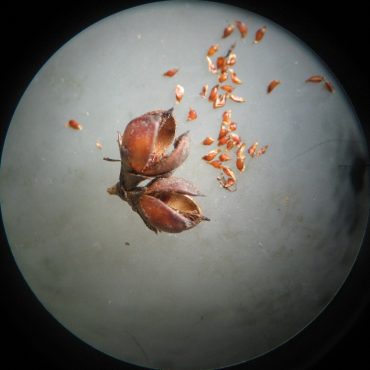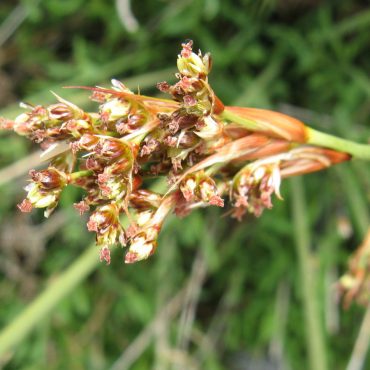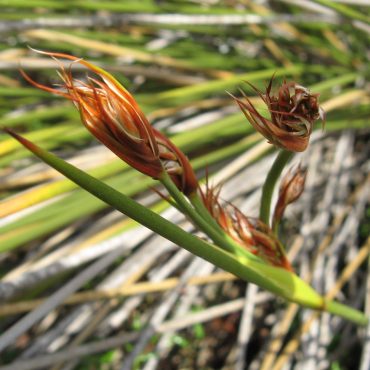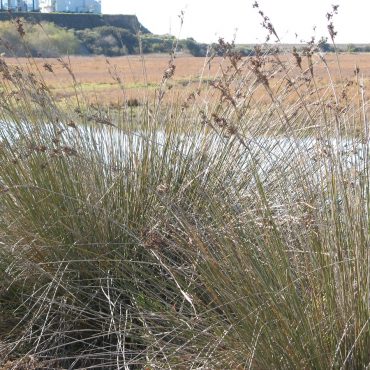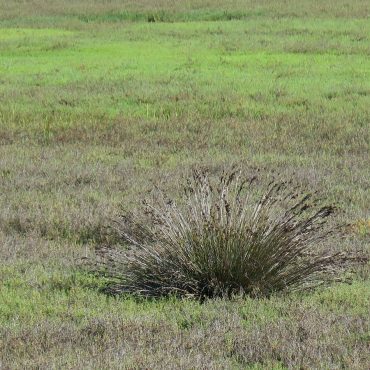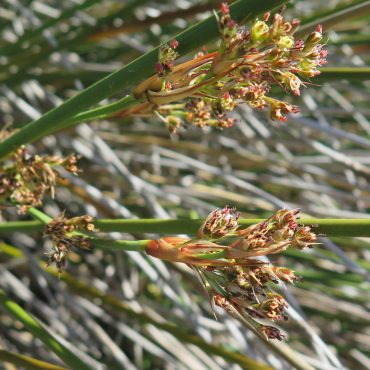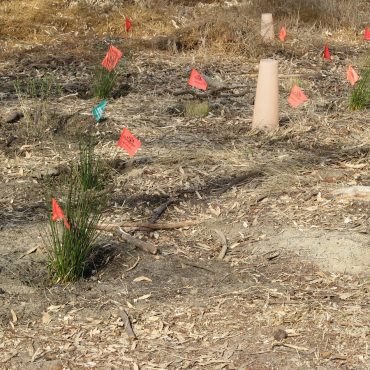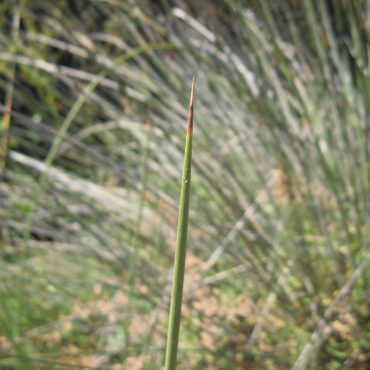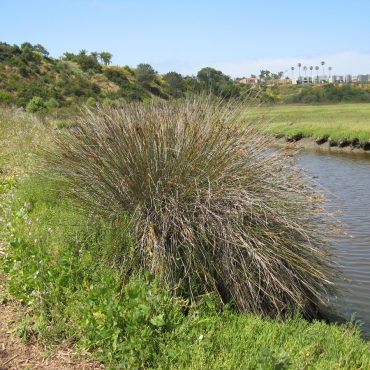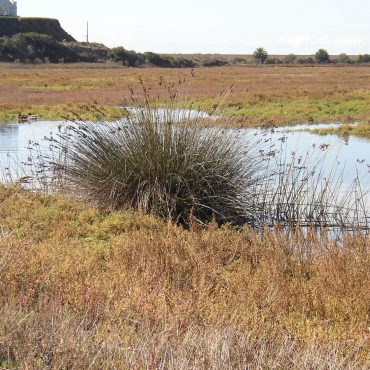Spiny rush is a grass-like, evergreen perennial that may reach three or four feet (1-1.2 m) in height. The most conspicuous feature is its “hedgehog,” or sea urchin, appearance, with a dense tuft of long leaves ascending and spreading from a short, subsurface rhizome. Cylindrical leaves are smooth, sharply pointed at the ends and form a sheath around the bases of the flowering stems.
Flowers are born in compound clusters on long, stiff, unbranched stems that resemble the leaves. Clusters appear to be lateral near stem ends, but actually, they are terminal; what appears to be a continuation of the stem to a sharp point, is actually a modified leaf (bract) that sheaths the top of the stem immediately below the flower cluster. Within a cluster are a few to many smaller clusters, each with one to six flowers. Cluster branchlets are subtended by small, leaf-like bracts. The inconspicuous flowers of spiny rush are bisexual and consist of three sepals and three similar petals (together called tepals), six stamens and a pistil. Tepals are green, aging to reddish or brown. Stamens are about as long as the tepals with pale yellow-green, flattened anthers. The pistil has a globular, superior, six-lobed ovary and a three-branched, red style each branch terminating in an undifferentiated stigma. Flowers open May into August1 while well within the cluster of leaves, and stems continue to elongate as fruits mature.
Conspicuous clusters of mahogany capsules develop following fertilization and ride like tassels near the tops of the leaves. Capsules are nearly spherical, with a small point, about 1/4 inch (0.6 cm) long. Each capsule opens from the end into three valves, releasing numerous small seeds, < 1/16 inch (0.1 cm) long. Opened capsules remain on the plant for many months.

